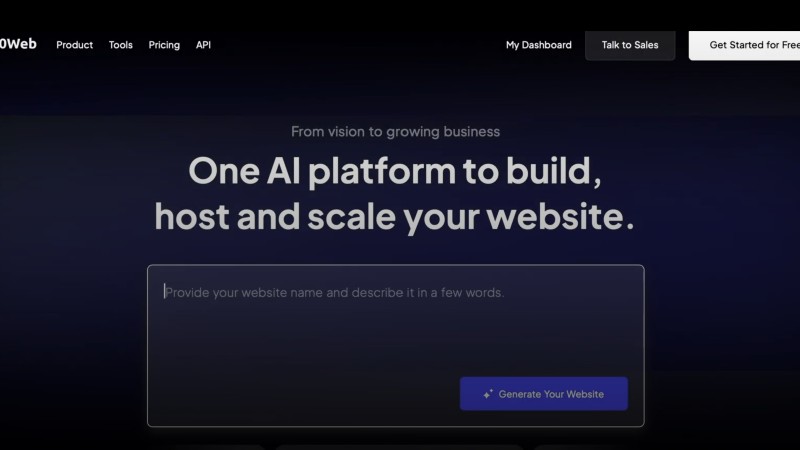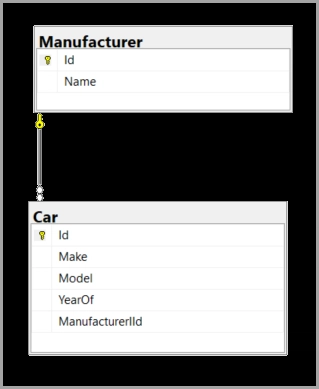Open Source Project Sponsorship Tips Explained
Abstract: In this post, we explore practical tips for sustaining open source projects through sponsorship—from clearly defining funding needs to fostering a vibrant community and maintaining transparency. We cover historical context and definitions of open source, core concepts around sponsorship platforms, benefits for both maintainers and sponsors, various applications and use cases, challenges, and the future outlook of open source funding. Along the way, we integrate key insights from the original "Open Source Project Sponsorship Tips" article and include valuable resources from the community. Introduction Open source software is the lifeblood of modern development, powering websites, applications, and innovative tools that millions use every day. Yet, despite its widespread use, many of these projects struggle with sustainable funding. Sponsorship has emerged as a practical solution that benefits both project maintainers and their sponsors. In this post, we break down how sponsorship works, list tips for effective fundraising, and explain why transparent financial strategies are vital for open source sustainability. We also provide additional context with resources such as GitHub Sponsors, Open Collective, and Patreon. Background and Context Open source software has a rich history rooted in collaboration, transparency, and community-driven development. The movement began as a counterpoint to proprietary software models, fostering an environment where developers share code freely and work together on common objectives. Over time, projects have evolved, and their significance in industries from finance to healthcare has only grown. Definitions and Ecosystem Context Open Source Software: Software with source code that anyone can inspect, modify, and enhance. Sponsorship: Financial or resource-based support given to projects, ensuring ongoing maintenance, new feature development, and infrastructure growth. Platforms: Several platforms have emerged to facilitate sponsorship, including GitHub Sponsors, Open Collective, and Patreon. Historically, open source projects relied on volunteer contributions, but the increasing complexity and scale of projects have underscored the need for more sustainable financial models. For a deeper understanding of funding models, visit sustainable funding for open source. Core Concepts and Features A successful sponsorship strategy begins with a clear understanding of both the sponsors’ needs and the project’s value proposition. Below, we outline essential tips and features. 1. Clearly Define Your Needs Project maintainers should start by outlining their financial goals. Be specific about the purpose of the funds, whether it is for: Server costs: "Sponsorship of $100/month covers server maintenance." Feature development: "An investment of $500 will fuel new feature development or address bug fixes." Documentation and infrastructure improvements. A transparent breakdown of expenses builds trust with potential sponsors. For more details on financial transparency, check out the open source project financial transparency guide. 2. Choosing the Right Platform Selecting a suitable platform is crucial for project visibility and sponsor convenience. Here are some popular options: Platform Best For Key Benefit GitHub Sponsors Developers with projects hosted on GitHub Direct integration with GitHub Open Collective Teams managing multiple projects Transparent expense tracking Patreon Projects seeking recurring support Community and long-term funding PayPal or Crowdfunding One-time contributions or smaller projects Simplicity Each platform comes with its set of advantages. For a broader overview, see open source project sponsorship platforms. 3. Provide Value to Sponsors Sponsoring an open source project goes beyond a simple financial transaction. Maintainers can offer added value through: Recognition: A dedicated “Sponsors” page or shoutouts in the README. Perks: Early access to new features, priority support, or exclusive webinars. Visibility: Sponsors’ logos on project websites or marketing materials. These benefits not only help in attracting financial support but also create a mutually beneficial relationship that rewards sponsors with enhanced visibility and credibility. More on this can be found in open source sponsorship benefits. 4. Build and Engage Your Community A strong community is a cornerstone of open source growth. Engaging with users through clear communication channels and community events builds loyalty and encourages financial contributions. Key community engagement strategies include: Regular updates via newsletters and social media. Transparent roadmaps and changelogs. Interactive forums and Q&A sessions. For more strategies, explore community engagement strategies. 5. Maintain Transparency Transparency in the u

Abstract:
In this post, we explore practical tips for sustaining open source projects through sponsorship—from clearly defining funding needs to fostering a vibrant community and maintaining transparency. We cover historical context and definitions of open source, core concepts around sponsorship platforms, benefits for both maintainers and sponsors, various applications and use cases, challenges, and the future outlook of open source funding. Along the way, we integrate key insights from the original "Open Source Project Sponsorship Tips" article and include valuable resources from the community.
Introduction
Open source software is the lifeblood of modern development, powering websites, applications, and innovative tools that millions use every day. Yet, despite its widespread use, many of these projects struggle with sustainable funding. Sponsorship has emerged as a practical solution that benefits both project maintainers and their sponsors. In this post, we break down how sponsorship works, list tips for effective fundraising, and explain why transparent financial strategies are vital for open source sustainability. We also provide additional context with resources such as GitHub Sponsors, Open Collective, and Patreon.
Background and Context
Open source software has a rich history rooted in collaboration, transparency, and community-driven development. The movement began as a counterpoint to proprietary software models, fostering an environment where developers share code freely and work together on common objectives. Over time, projects have evolved, and their significance in industries from finance to healthcare has only grown.
Definitions and Ecosystem Context
- Open Source Software: Software with source code that anyone can inspect, modify, and enhance.
- Sponsorship: Financial or resource-based support given to projects, ensuring ongoing maintenance, new feature development, and infrastructure growth.
- Platforms: Several platforms have emerged to facilitate sponsorship, including GitHub Sponsors, Open Collective, and Patreon.
Historically, open source projects relied on volunteer contributions, but the increasing complexity and scale of projects have underscored the need for more sustainable financial models. For a deeper understanding of funding models, visit sustainable funding for open source.
Core Concepts and Features
A successful sponsorship strategy begins with a clear understanding of both the sponsors’ needs and the project’s value proposition. Below, we outline essential tips and features.
1. Clearly Define Your Needs
Project maintainers should start by outlining their financial goals. Be specific about the purpose of the funds, whether it is for:
- Server costs: "Sponsorship of $100/month covers server maintenance."
- Feature development: "An investment of $500 will fuel new feature development or address bug fixes."
- Documentation and infrastructure improvements.
A transparent breakdown of expenses builds trust with potential sponsors. For more details on financial transparency, check out the open source project financial transparency guide.
2. Choosing the Right Platform
Selecting a suitable platform is crucial for project visibility and sponsor convenience. Here are some popular options:
| Platform | Best For | Key Benefit |
|---|---|---|
| GitHub Sponsors | Developers with projects hosted on GitHub | Direct integration with GitHub |
| Open Collective | Teams managing multiple projects | Transparent expense tracking |
| Patreon | Projects seeking recurring support | Community and long-term funding |
| PayPal or Crowdfunding | One-time contributions or smaller projects | Simplicity |
Each platform comes with its set of advantages. For a broader overview, see open source project sponsorship platforms.
3. Provide Value to Sponsors
Sponsoring an open source project goes beyond a simple financial transaction. Maintainers can offer added value through:
- Recognition: A dedicated “Sponsors” page or shoutouts in the README.
- Perks: Early access to new features, priority support, or exclusive webinars.
- Visibility: Sponsors’ logos on project websites or marketing materials.
These benefits not only help in attracting financial support but also create a mutually beneficial relationship that rewards sponsors with enhanced visibility and credibility. More on this can be found in open source sponsorship benefits.
4. Build and Engage Your Community
A strong community is a cornerstone of open source growth. Engaging with users through clear communication channels and community events builds loyalty and encourages financial contributions.
Key community engagement strategies include:
- Regular updates via newsletters and social media.
- Transparent roadmaps and changelogs.
- Interactive forums and Q&A sessions.
For more strategies, explore community engagement strategies.
5. Maintain Transparency
Transparency in the use of funds reassures sponsors and deepens trust. Regular reports showing how funds contribute to milestones—such as quicker release cycles or improved security measures—are essential.
For example:
- "Recent contributions helped launch v2.0.0 ahead of schedule."
- "Sponsorship funding supported critical vulnerability fixes."
Learn more about these practices in the open source project financial strategies resource.
6. Aligning Sponsor Interests
Sponsors, especially corporations, benefit from aligning their sponsorship with their business goals. For instance:
- Brand Visibility: Showing support for the very tools they depend on.
- Recruitment: Attracting top talent interested in collaborative and innovative projects.
- Competitive Edge: Securing tailored features for their unique business needs.
This approach creates a win-win scenario. For more information, check open source project investment opportunities.
Applications and Use Cases
To illustrate the impact of sponsorship in open source initiatives, here are some use cases:
Use Case 1: Supporting a Core Library
A developer maintains a widely used JavaScript library. The project lists its specific needs—server hosting, developer compensation, and bug fixes. By leveraging GitHub Sponsors and providing sponsor recognition, the project secures a steady income. As a result, the library receives regular updates and increased market confidence.
Use Case 2: Enhancing Developer Tools
An open source team offers an integrated suite of development tools. By using a hybrid model of recurring donations through Patreon and independent crowdfunding campaigns via PayPal, they can invest in hiring additional developers and produce comprehensive documentation. This leads to a better user experience and fosters a robust community ecosystem.
Use Case 3: Corporate Sponsorship for Critical Infrastructure
A large organization depends on open source software for its backend operations. By sponsoring a critical infrastructure project, they ensure security patches and feature enhancements that directly impact their business operations. Furthermore, these actions are publicly acknowledged, boosting their public profile and aligning with their corporate social responsibility (CSR) strategy.
Challenges and Limitations
Even with effective sponsorship strategies, several challenges remain:
- Technical Challenges: Managing multiple sponsorship platforms and integrating contributions into the project’s roadmap can be complex.
- Adoption Barriers: Smaller projects may struggle to gain enough attention or present a compelling value proposition to attract sizable sponsorship.
- Financial Uncertainty: Contributions can be sporadic, making long-term financial planning challenging for maintainers.
- Community Trust: Sponsors and maintainers must work consistently to build and maintain trust, ensuring that contributions are correctly allocated and transparently managed.
A bullet list summarizing these challenges:
- Complex integration of various funding platforms.
- Unpredictable income streams affecting budgeting.
- Communication gaps between sponsors and maintainers.
- Difficulty in showcasing impact without regular updates.
For a discussion on similar issues, refer to articles such as Financial Backing for Open Source Projects: Sustaining Innovation and Collaboration.
Future Outlook and Innovations
As open source continues to evolve, so do sponsorship mechanisms. Here are some trends and innovations worth watching:
Tokenization and Blockchain
Blockchain technology is increasingly entering the open source funding arena. By tokenizing open source licenses, projects can create new revenue streams and enhance transparency. This includes mechanisms like decentralized autonomous organizations (DAOs) that decide on fund allocation democratically.
Enhanced Collaboration Platforms
Future platforms may integrate traditional crowdfunding with blockchain-based verification systems to secure every contribution. This innovation can reduce administrative overhead and improve trust in how funds are used.
Community-Driven Funding Models
Emphasis on contributions beyond monetary support is growing. Some projects are exploring mentoring programs, direct code contributions, and in-kind donations. Leveraging these combined resources can build a more resilient funding ecosystem.
Integration with Corporate CSR
As corporations increasingly recognize the strategic importance of sponsoring open source projects, we are likely to see stronger alignment between corporate CSR initiatives and open source sponsorship. Such integrations can accelerate adoption and innovation in the tech ecosystem.
For more on future trends, explore open source developer funding strategies from the community.
Summary
In this comprehensive post, we’ve delved into the world of open source project sponsorship. We began by reviewing the historical context of open source software and highlighted why sustainable funding is crucial for modern development. Key strategies discussed include:
- Clear Need Definition: Outlining specific funding goals to build trust.
- Platform Selection: Leveraging tools like GitHub Sponsors, Open Collective, and Patreon.
- Sponsor Value: Offering recognition, early access, and premium support.
- Community Engagement: Building and maintaining an active user base.
- Transparency and Alignment: Reporting fund usage and aligning projects with sponsor interests.
We illustrated these points with real-world use cases ranging from individual library maintenance to corporate sponsorship for critical infrastructure. The challenges—both technical and financial—remind us that while sponsorship is a powerful tool, it requires dedicated effort in communication, documentation, and community management.
Looking forward, blockchain integration, tokenized sponsorship models, and enhanced collaboration platforms are set to revolutionize how open source projects secure funding. These innovations will not only provide financial stability but also foster deeper collaborative networks between developers and industry leaders.
For additional insights and best practices on open source sponsorship and funding, check out these valuable resources:
- Open Source Project Financial Transparency
- Open Source Sponsorship Benefits
- Open Source Developer Funding Strategies
Additional Resources and Final Thoughts
To wrap up, here’s a bullet list of key takeaways:
- Identify Funding Needs: Be specific about why funds are needed.
- Choose the Right Platform: Evaluate options like GitHub Sponsors, Open Collective, and Patreon.
- Provide Mutual Value: Offer sponsors perks and recognition.
- Engage Constantly: Build trust by maintaining a transparent roadmap and regular updates.
- Adopt New Technologies: Stay open to blockchain and tokenization trends that can redefine sponsorship models.
Finally, the importance of sponsorship as a catalyst for open source innovation cannot be underestimated. Both maintainers and sponsors benefit from clear communication, shared objectives, and mutual trust. As open source projects continue to underpin the technological advancements of tomorrow, financial support will remain a critical ingredient for sustainable development.
For a broader perspective on related topics such as decentralized governance models and the viability of open source funding, you might also be interested in reading articles on Open Source Licensing Tips for Indie Hackers and Exploring Open Source Developer Funding Strategies.
Through innovative financial approaches and active community engagement, the open source ecosystem can thrive. By following the tips and strategies outlined above, project maintainers can secure the necessary funding to innovate and sustain their projects, while sponsors not only contribute to cutting-edge development but also reap long-term benefits in brand visibility, technical advancement, and market strength.
In summary, open source sponsorship is a dynamic, evolving field with the potential to reshape how technology is developed and maintained. Embracing transparency, leveraging multiple platforms, and aligning community goals are the keys to unlocking this potential.
Happy coding and funding!










































































































































































![[The AI Show Episode 146]: Rise of “AI-First” Companies, AI Job Disruption, GPT-4o Update Gets Rolled Back, How Big Consulting Firms Use AI, and Meta AI App](https://www.marketingaiinstitute.com/hubfs/ep%20146%20cover.png)










































































































































































.png?width=1920&height=1920&fit=bounds&quality=70&format=jpg&auto=webp#)































































































_Aleksey_Funtap_Alamy.jpg?width=1280&auto=webp&quality=80&disable=upscale#)
_Sergey_Tarasov_Alamy.jpg?width=1280&auto=webp&quality=80&disable=upscale#)















































































































![Apple Foldable iPhone to Feature New Display Tech, 19% Thinner Panel [Rumor]](https://www.iclarified.com/images/news/97271/97271/97271-640.jpg)
![Apple Developing New Chips for Smart Glasses, Macs, AI Servers [Report]](https://www.iclarified.com/images/news/97269/97269/97269-640.jpg)
![Apple Shares New Mother's Day Ad: 'A Gift for Mom' [Video]](https://www.iclarified.com/images/news/97267/97267/97267-640.jpg)
![Apple Shares Official Trailer for 'Stick' Starring Owen Wilson [Video]](https://www.iclarified.com/images/news/97264/97264/97264-640.jpg)



































































































